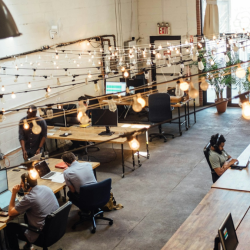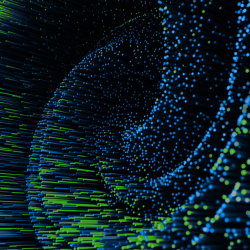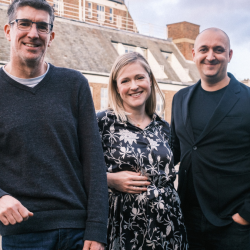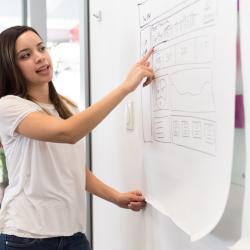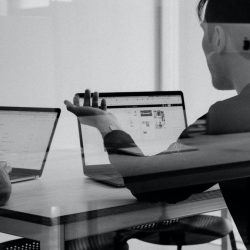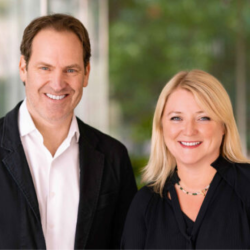In the creative sector there is no more sure-fire route to boring, mediocre work than falling into a transactional relationship with brand clients. Brilliant ideas don’t come when walls are built between the client and their agency. They come when both sides can talk, hypothesise, and ideate together. In my opinion, there is no greater moment in a meeting than when someone says, ‘Now bear with me on this, but what if we…’ As agencies, our work to build more collaborative relationships with clients is never done. And amid all of the hype artificial intelligence (AI) has received over the last year and a half, most of it has focused on how it can reduce collaboration.
It’s a tool that means we don’t need to talk to designers, copywriters, strategists, etc, right?
But what if AI was actually the key to unlocking further collaboration?
Using AI, agencies and clients can produce and test tons of ideas at rapid pace. Within one meeting you can trial everything, from different tones of voice to different imagery and colours. What the AI spits out won’t be the finished product — far from it, in fact. But it can give the quick flavour agencies and clients need to make fast decisions. In short, AI allows for more ‘what ifs’. Anyone can ask what if the tone of voice was more serious? What if the model held the product differently? What if a pug wearing a bowler hat was the face of our brand? All this can be tested instantly in the room without adding days and weeks of development time. This gives agencies the freedom to fail, because you can fail fast. Getting things wrong used to be expensive and time-consuming, but now agencies can fail quickly and cheaply. And as everyone hopefully knows by now, failure is the key to unlocking magic (side note: if you need convincing on this, check out Museum of Failure it’s an inspiration goldmine).
The speed of AI also means agencies can involve clients in processes they never previously would have, allowing for a much more collaborative relationship along the process rather than just going away, presenting, getting feedback and going away again. For example, we’ve used AI for storyboarding in every campaign we’ve developed over the past year, and it’s been a resounding success. The clients sit with us and we test shoot angles, poses, and even costume designs live in a room. When we’re happy we give that to a proper illustrator. This means the craftspeople can spend more time making something amazing, rather than testing out client amends. But AI can do more than just enable fast edits. We’ve used it with clients to create personalised, reactive campaigns that adapt to multiple situations and markets. When working with one beer brand on a campaign centred around a global sports tournament, we used AI to create content that could instantly react to every possible fixture and result, down to changing the ethnic makeup of the crowd to reflect the local market. Usually, there’s very little time for collaboration with the client when creating a reactive piece of content. However, because we could build a template ahead of time and use AI to showcase the reactive content that might be made, the client could be more involved in that process than ever before.
Navigating the downsides
As with everything AI-related, some significant challenges need consideration. Fear and scepticism can be major challenges for some clients and agencies. Over the past year AI has generated many negative headlines, and some brands have been accused of lying to consumers with AI-powered ads. That’s the kind of bad publicity brands rarely want to risk inviting to their doors. However, agencies and clients can use AI successfully, while remaining sensitive to public concerns. This new era of AI-powered collaboration offers clients the opportunity to dramatically change the parameters of their jobs and improve how they work with their agencies, but there’s an education piece that needs to come first.
It’s up to agencies to lead that education, while clients must keep their minds open to the creative possibilities.
There’s undoubtedly a lot of work to do. Right now, the power of AI within the client-agency relationship is centred on the campaign creation process. In the future, agencies will need to work out how best to use AI in the later stages, from campaign launch to post-campaign analysis. But while it’s hard to predict precisely what AI’s future will be, I’m confident it will continue to bring clients and agencies closer together. AI will open the door for more collaboration, better testing, improved personalisation and, ultimately, more brilliant work.
Featured image: Murat Onder / Unsplash


























